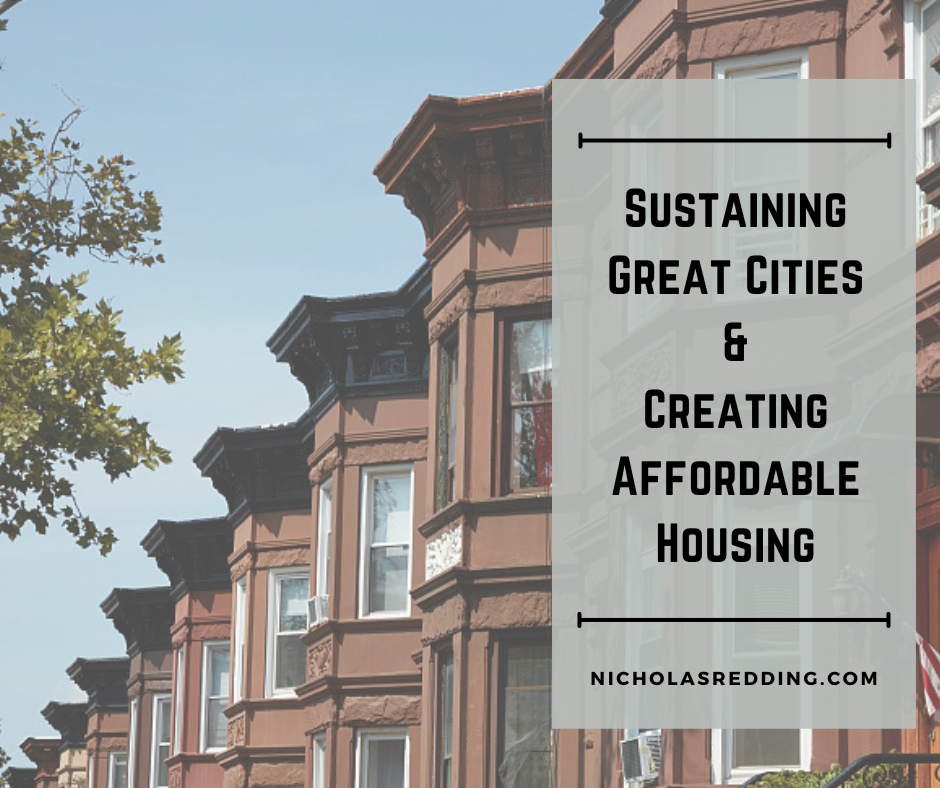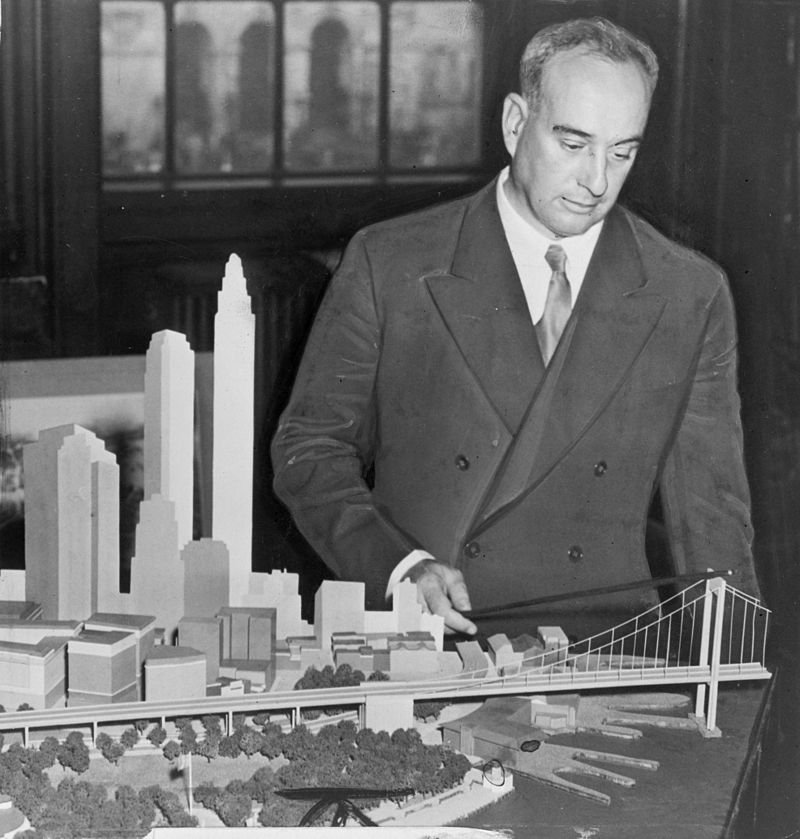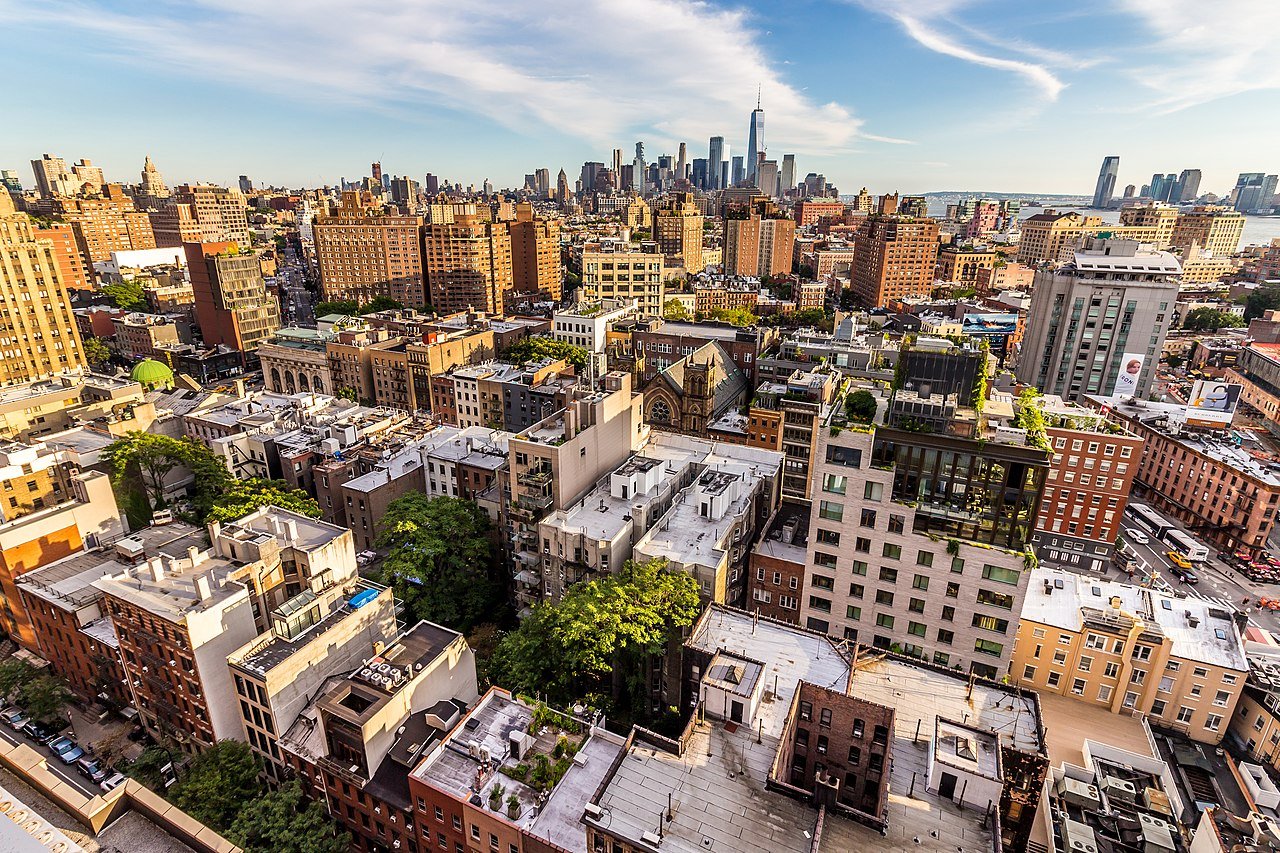Sustaining Great Cities & Creating Affordable Housing
The late, Daniel Patrick Moynihan, the eloquent and charismatic senator who represented New York for nearly a quarter century is famously remembered for many of his classic quips and retorts, but perhaps most notable of all was his axiom of debate:
“You are entitled to your opinion. But you are not entitled to your own facts.”
As a preservationist, while reading Binyamin Appelbaum’s latest indictment of preservation in the pages of the New York Times as a leading cause of New York City’s affordable housing crisis, I kept coming back to the good senator’s suggestion in light of the opinion piece’s challenges when it comes to the facts of preservation and cities.
Mr. Appelbaum, who is no stranger to calling into question the value of preservation, suggests in his latest opinion piece that the 4% of New York City’s land designated as historic districts are significantly liable for the city’s lack of infill, growth, redevelopment and creation of new affordable housing.
So, the wise reader must ask: Do the facts really support this view?
Not exactly.
When it comes to density, in New York, a study conducted in 2020 found that, “more than nine in ten historic districts have a density greater than the density of the city overall.” Somewhat surprisingly, some 55% of the city’s landmass has a density less than 20,000 per square mile (compared to the city’s overall average of 27,000) — but almost none of that land area is in historic districts. So, when it comes to packing people in . . . historic districts do a great job.
Fine, but is this preserved building stock holding back the creation of new affordable housing?
Robert Moses; the Urban Renewal Champion of the 20th c. [C.M. Stieglitz, World Telegram staff photographer, Public domain, via Wikimedia]
Not exactly.
In any already developed space, it’s going to be complex to build new unless you undertake some sort of Urban Renewal 2.0. Which really begs the question is that what we’re hoping for? New York went down that road once with Robert Moses and endured painfully damaging effects still felt to this day.
That all said . . . if you use the data associated with former Mayor De Blasio’s Housing NY Initiative, some 23% of affordable housing units created in the city’s historic districts have been through new construction, which according to a PlaceEconomics study “is not dissimilar to the 33% share of new affordable housing units created in the rest of the city.”
Other studies have found the same result. ThinkBrooklyn’s study on the intersection of affordable housing and historic preservation found that, “in four out of the five boroughs (The Bronx, Brooklyn, Manhattan, and Staten Island) subsidized rental units in historic districts have maintained their [affordable housing] subsidies at higher rates than units not in historic districts.”
Moving beyond just density and affordable housing starts and retention, numerous studies like those conducted by PlaceEconomics have documented compelling societal and economic impacts of historic districts on a wide front: from increased small business incubation, greater diversity of residents, lower cost for creation of new affordable housing units ($153,000 for rehabilitation of an existing structure compared to $209,000 for new construction), to significantly reduced transportation costs for those living in existing historic districts vs. newer suburban affordable housing.
These represent just a smattering of the facts which suggest the argument against New York’s historic districts probably deserves another look. And, as the author even suggests in the piece, perhaps finding ways to accelerate growth in the other 96% of landmass should also be a priority.
[Disclaimer: If I’m being intellectually honest, I also must admit that sometimes, yes, preservation has been used as a tool of exclusion, disenfranchisement, and NIMBYism. Many historic districts are expensive places to live — sometimes falling victim to their own popularity (which incidentally, I also believe means that we should build new places like them). No community is perfect — and there is a legacy that preservation should, must, and is grappling with to address.]
As I move beyond facts to opinion, I am happy to note that. So, here begins my opinion.
I believe Mr. Appelbaum is mostly wrong in asserting that,
“New York is not a great city because of its buildings.”
Buildings are not the only thing that makes New York great — I’ll concede that. But leaving them out of the calculus seems to be missing the forest for the trees.
Anyone who is asked to think about New York City will likely mention things that fall into three broad categories: Places, Culture, & People.
A New York Slice.
[Wil540 art, CC BY-SA 4.0 via Wikimedia]
They’ll likely talk about sports (culture), celebrities (people), parks (places), food (culture), and, most certainly, landmarks (places). Now what things they mention will likely depend on where they live (either inside or outside of New York) and their answers will be varied and unique — but finding someone who didn’t value some aspect of New York’s built environment would be a challenge.
And, no, to be fair, Mr. Appelbaum is not suggesting tearing down iconic landmarks in the more traditional sense — but places like The Village or Brooklyn Heights carry a weight in their stories, culture and identity equal to some of the city’s greatest architectural achievements — and they also make wonderful places to live.
Bird's eye view of Greenwich Village, facing towards the skyline of Lower Manhattan [Felix Stahlberg, CC BY 2.0 via Wikimedia]
Speaking of stories, without these special places, telling the full American story can be tough. This too, is the work of preservation. In New York, we’re fortunate that many special places exist in these protected districts to tell a wide range of stories from early African American history to LGBTQ history of the 20th century.
And, here’s another opinion, but one backed up by some facts: building more market rate housing in hot markets like this doesn’t always result in more affordable housing. That requires filtering — a sort of trickle down of affordable housing — which is enhanced when that housing stock survives (another word could be preserved) and many studies across the nation are beginning to highlight that fact.
Here’s a choice selection from a report focusing on San Francisco:
In overheated markets like San Francisco, addressing the displacement crisis will require aggressive preservation strategies in addition to the development of subsidized and market-rate housing, as building alone won’t protect specific vulnerable neighborhoods and households. This does not mean that we should not continue and even accelerate building. However, to help stabilize existing communities we need to look beyond housing development alone to strategies that protect tenants and help them stay in their homes. – Housing Production, Filtering and Displacement: Untangling the Relationships
So, what’s the point and where do we go from here?
Preservation is not the enemy of affordable housing. I think Mr. Appelbaum missed his target with preservation. In reality the facts suggest historic districts are doing their part and perhaps can even be part of the solution in preserving existing communities and preventing more displacement.
People value buildings and the built environment. Here’s an easy (and subjective) way to prove it — ask someone where they take family or friends visiting from out of town. Do they head to the strip mall or the new fourplex? Probably not. But, I bet the nearest charming Main Street or cozy downtown restaurant is on their short list.
Historic places also help us tell important stories. Removing historic structures, especially those associated with stories underrepresented in our national narrative, needlessly erases our connection to those voices. Being able to visit the Stonewall Inn is an entirely different experience than reading about it.
There’s no single approach to addressing affordable housing capable of solving every problem. Most serious housing advocates agree we need an all of the above approach. We need to preserve existing places (historic districts were the original missing middle, by the way) and we need to find ways to build new places people love just like historic districts. Knocking down parking minimums and removing barriers to reuse of commercial structures is a good place to start.
We need better data. Part of the problem is we don’t exactly understand the problem — and one big step forward is the work of the Zoning Atlas in communities and states around the nation. Preservationists and affordable housing advocates should be able to agree this is critical data and will help better inform better decisions than knee-jerk, “tear it down” suggestions that could actually do more harm than good. Alternatively, sometimes old buildings do need to go (there, I said it!) and this data will help inform when and where that is the right choice.
Preservation should continue to do better. As I noted in my disclaimer, not everything associated with preservation’s long history has been positive — and our community just like many others should find ways to address our past mistakes and avoid making them again. Finding innovative tools, for example, to preserve without displacing is critical and could be a powerful contribution of the preservation movement to the new challenges of the 21st century. This also means finding ways to get to yes on affordable housing and being a positive advocate for change (think evolution of places — not revolution).
And, since I started by quoting a New Yorker, I’ll end with another New Yorker who was equally passionate about her city and the value of human scaled spaces. It was Jane Jacobs, who standing up to another effort aimed at demolition (for a different reason) explained,
“We expect too much of new buildings, and too little of ourselves.”
It’s not just the buildings that make a city great and its not just the new buildings that will solve the affordable housing crisis.
Acknowledgments and thanks are due to PlaceEconomics for their many studies, most of which are freely available from their website and professionally document the power of historic communities.




